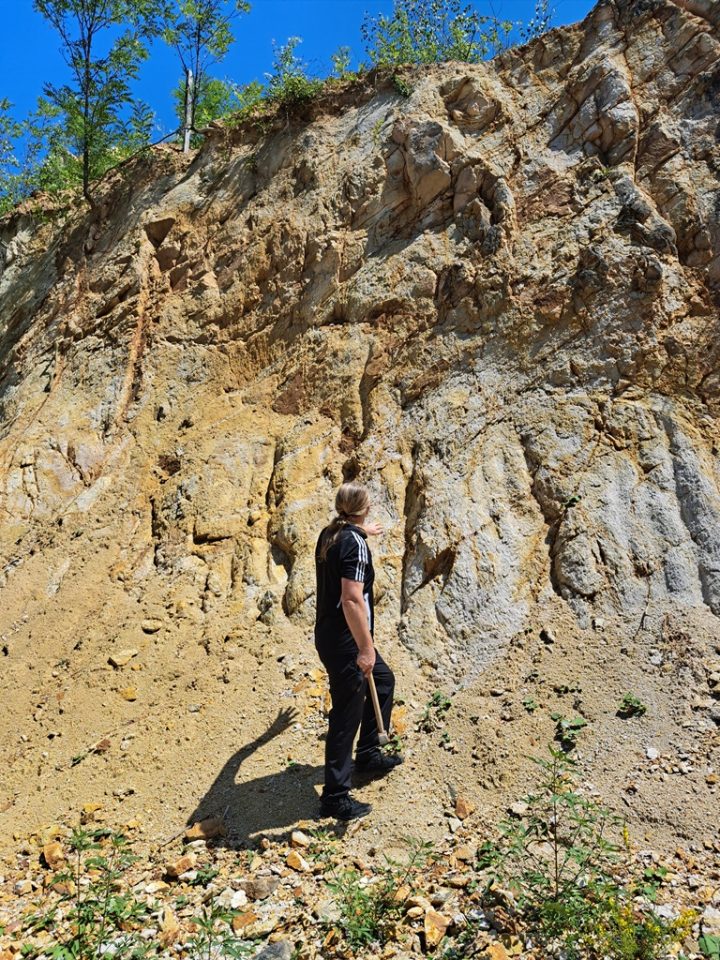In cooperation with prof. Dr. Elvir Babajić from the University of Tuzla, during the summer months we worked on the history of the formation of deposits and occurrences of clay in our country, which are related to volcanic activity.
This creative and scientific story begins in Bratunac, at the Zagoni kaolin deposite, where lithological varieties of kaolin and kaolinized dacites, as well as unusual samples reminiscent of bauxite, were sampled. The samples will be the subject of further research by the RIS BRIEFCASE consortium in which we are a partner. In the meantime, our team is working on an educational “briefcase” that contains more stories about volcanoes that, millions of years ago, defined the mineral wealth of Bosnia and Herzegovina with their eruptions.
By the way, the appearance of volcanoes was frequent during the formation of both oceanic and continental Earth’s crust. Volcanic activity has many aspects related to chemical sciences. The sensor-measured chemical composition of gases released by inactive volcanoes, especially the ratio of the amount of CO2/SO2, helps in predicting future eruptions. Today, these analyzes are even done using light drones (https://www.nature.com/articles/s41598-022-21935-5). On the other hand, the collision of lava with sea water can also lead to the creation of clouds of hydrochloric acid vapor, which carries a great risk for human, animal and plant life. There is also a positive influence of volcanoes on the appearance of life on Earth. Thanks to volcanic activity, a large amount of water was released from the interior of the planet, and water is the basis of life processes. Also, one of the results of eruptions is the scattering of pyroclastic material (Greek: pyros-fire, clastos-grain) in a wide area around the center of the eruption, and depending on the chemical composition of the lava itself, the ash can be very rich in minerals that nourish the soil.
In addition to the examination of specific minerals, the focus of our research is also the geopolymerization reaction of kaolin. Mineral substances such as kaolin were formed as a result of volcanic eruptions. Volcanic deposits are abundant near active and inactive volcanoes, and today large areas of the lithosphere are rich in minerals that were formed during this process. The deposits are formed by the cooling of magma during explosive volcanic eruptions. The interest in the use of minerals that were formed due to volcanic activity, in geopolymers, is due to their high content of silicon dioxide and aluminum oxide, which form the basis for the synthesis of geopolymers. Our goal is to examine the composition of kaolin originating from our country, as well as its potential in application, with a focus on “3D” printing of construction objects. This modern and innovative approach to the construction of buildings could greatly help reduce the negative impact of man on the planet in the decades to come. In the next few months, as part of the RIS BRIEFCASE project, Marija Stojaković, our young researcher, will work on this topic.
